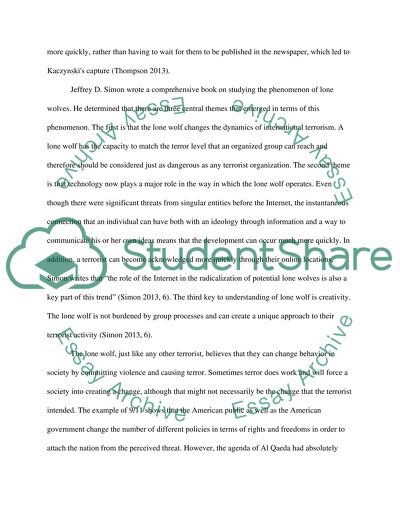Cite this document
(“Lone Wolf Terrorism: Leaderless Resistance Term Paper”, n.d.)
Lone Wolf Terrorism: Leaderless Resistance Term Paper. Retrieved from https://studentshare.org/social-science/1672893-lone-wolf-essay
Lone Wolf Terrorism: Leaderless Resistance Term Paper. Retrieved from https://studentshare.org/social-science/1672893-lone-wolf-essay
(Lone Wolf Terrorism: Leaderless Resistance Term Paper)
Lone Wolf Terrorism: Leaderless Resistance Term Paper. https://studentshare.org/social-science/1672893-lone-wolf-essay.
Lone Wolf Terrorism: Leaderless Resistance Term Paper. https://studentshare.org/social-science/1672893-lone-wolf-essay.
“Lone Wolf Terrorism: Leaderless Resistance Term Paper”, n.d. https://studentshare.org/social-science/1672893-lone-wolf-essay.


